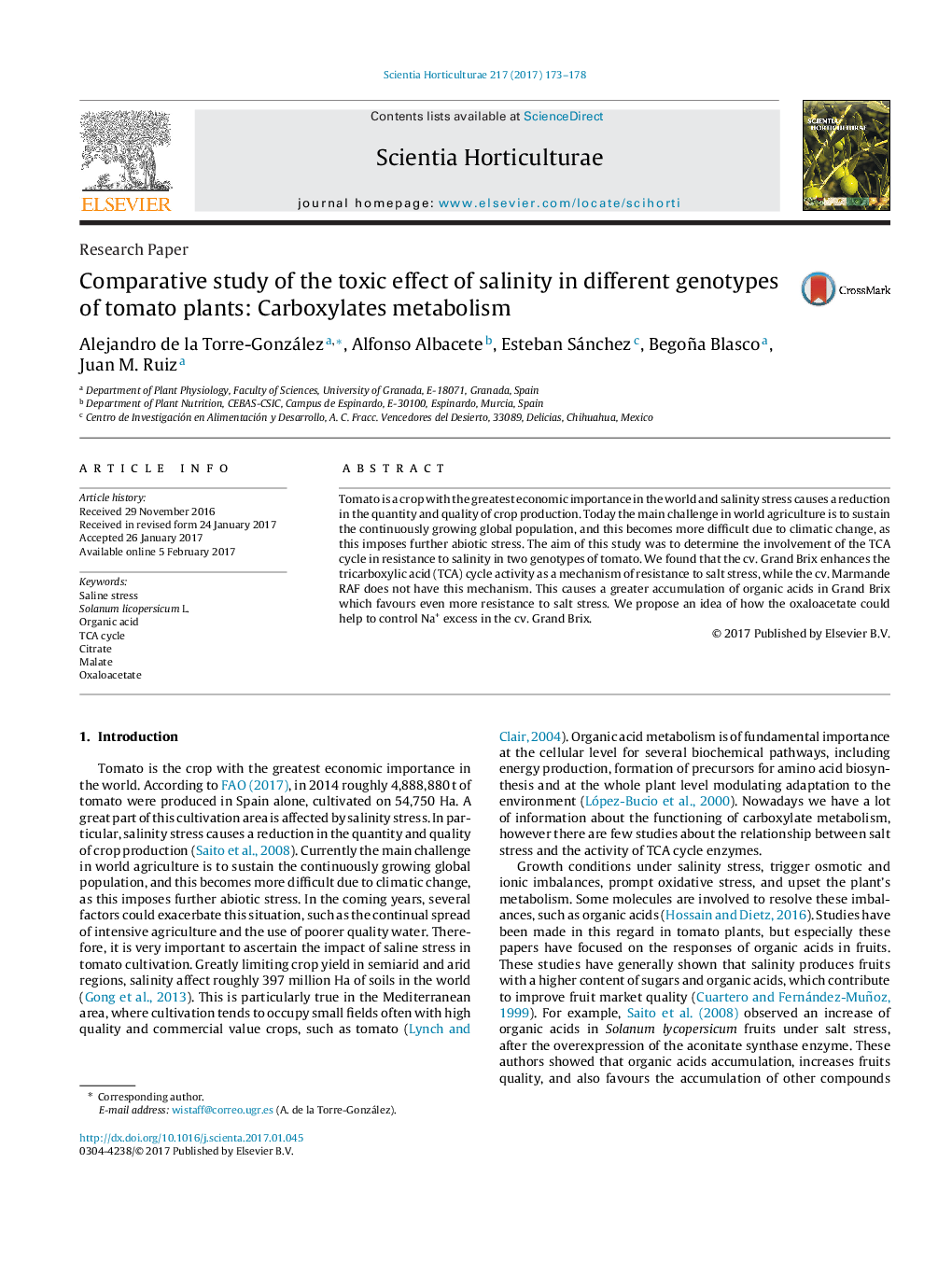| کد مقاله | کد نشریه | سال انتشار | مقاله انگلیسی | نسخه تمام متن |
|---|---|---|---|---|
| 5769688 | 1628781 | 2017 | 6 صفحه PDF | دانلود رایگان |
- Grand Brix has lost biomass less under salt stress.
- The influence of salt stress on the TCA cycle enzymes will depend of the variety.
- The increased activity of the TCA cycle enzymes helps saline stress resistance.
- The cv. Grand Brix (resistant genotype) has a higher enzyme activity.
Tomato is a crop with the greatest economic importance in the world and salinity stress causes a reduction in the quantity and quality of crop production. Today the main challenge in world agriculture is to sustain the continuously growing global population, and this becomes more difficult due to climatic change, as this imposes further abiotic stress. The aim of this study was to determine the involvement of the TCA cycle in resistance to salinity in two genotypes of tomato. We found that the cv. Grand Brix enhances the tricarboxylic acid (TCA) cycle activity as a mechanism of resistance to salt stress, while the cv. Marmande RAF does not have this mechanism. This causes a greater accumulation of organic acids in Grand Brix which favours even more resistance to salt stress. We propose an idea of how the oxaloacetate could help to control Na+ excess in the cv. Grand Brix.
Journal: Scientia Horticulturae - Volume 217, 15 March 2017, Pages 173-178
